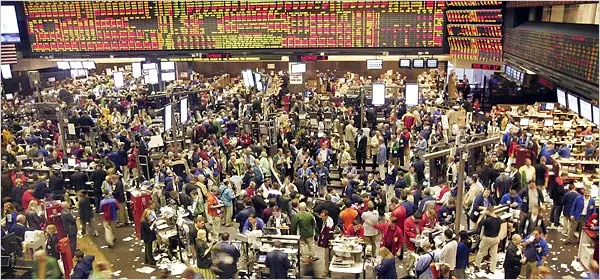NDM jumps 2¢ as cheese retreats; Class III futures outpace USDA forecasts. Mixed trading signals ahead of spring flush.
EXECUTIVE SUMMARY: CME dairy markets saw divergent trends on March 26th, with nonfat dry milk surging 2¢ to $1.16/lb amid strong export speculation, while cheese prices dipped (-1¢ blocks, -0.5¢ barrels) despite robust trading activity. Class III milk futures rose to .54/cwt, extending their premium over USDA projections, as traders positioned for spring production shifts. Butter rebounded 1.25¢ despite high inventories, while dry whey fell 1¢ with minimal participation. Global factors like a strong dollar pressured export-sensitive products, though domestic demand and upcoming Federal Order pricing changes fueled cautious optimism. Analysts recommend monitoring feed costs and inventory builds ahead of seasonal production spikes.
KEY TAKEAWAYS:
- Nonfat dry milk (+2¢) led gains on export optimism, with 11 trades signaling bullish sentiment
- Cheese prices retreated (-1¢ blocks) despite active trading, erasing Tuesday’s gains
- Class III futures ($18.54/cwt) continue trading above USDA forecasts, reflecting market confidence
- Butter defied inventories (+1.25¢) with technical buying despite 17% monthly stock increases
- Spring flush prep urged as Federal Order changes (June 1) loom, altering milk pricing dynamics

Today’s Chicago Mercantile Exchange (CME) dairy markets displayed mixed performance with notable strength in nonfat dry milk, while cheese prices retreated for the first time this week. Class III milk futures continued their upward momentum, closing at .54/cwt, maintaining their position above the USDA forecast of .50/cwt. Trading activity was particularly robust in the cheese and nonfat dry milk markets amid continued divergence between spot prices and longer-term USDA projections.
Key Price Changes & Market Trends
Today’s CME cash market showed varied performance across major dairy products, with nonfat dry milk showing significant strength while cheese prices retraced some of yesterday’s gains.
| Product | Closing Price | Change from Yesterday |
| Cheese (Blocks) | $1.6300/lb | -1.00¢ |
| Cheese (Barrels) | $1.6300/lb | -0.50¢ |
| Butter | $2.3300/lb | +1.25¢ |
| Nonfat Dry Milk | $1.1600/lb | +2.00¢ |
| Dry Whey | $0.5000/lb | -1.00¢ |
Cheese blocks posted the most significant decline of the day, dropping a penny to $1.6300/lb, erasing part of Tuesday’s 2-cent gain. This profit-taking came amid a strengthening dollar, which typically pressures export-sensitive commodities. Barrels declined slightly, with the block-barrel price spread now wholly eliminated at $1.6300/lb for both products.
Butter prices rebounded from yesterday’s decline, gaining 1.25 cents to close at $2.3300/lb despite high inventory levels reported in the most recent Cold Storage report. Nonfat dry milk showed the strongest performance, jumping 2 cents to $1.1600/lb with the most active trading of the day, potentially reflecting improved export prospects.
Volume and Trading Activity
Trading activity was notably robust in the cheese and nonfat dry milk markets today:
- Cheese Blocks: Ten trades were executed between $1.63 and $1.65, with moderate bidding interest (2 bids) against slightly higher offering pressure (3 offers).
- Cheese Barrels: Six trades completed from $1.63 to $1.65, with balanced interest (1 bid, one offer).
- Nonfat Dry Milk: The highest trading volume, with 11 trades executed from $1.14 to $1.66, and strong buying interest, evidenced by five bids and no offers at market close.
- Butter: No trades were completed, with one bid against two offers, suggesting cautious sentiment amid high inventory levels.
- Dry Whey: Minimal activity with just one trade and one bid, indicating lighter market participation.
Weekly volumes for blocks and barrels have reached 22 and 12 trades, respectively, through Wednesday, already surpassing some recent weekly totals and suggesting heightened market interest in cheese products despite today’s price declines.
Global Context
Global dairy production shows divergent trends across major exporters, creating mixed signals for the U.S. market. According to recent reporting, New Zealand milk production has improved while European Union production has declined. This regional variance creates selective export opportunities for U.S. producers, particularly as global dairy demand remains uneven.
The strengthening U.S. dollar reported today is pressuring export competitiveness across dairy products[4]. This currency effect likely contributed to today’s price declines in more export-sensitive products like cheese and whey, while domestically-oriented products like butter were less affected.
USDA has recently revised its 2025 dairy export forecast on a skim-solids basis downward to 49.1 billion pounds, a decrease of 0.4 billion pounds, primarily affecting export volumes to Southeast Asia[2]. This adjustment reflects ongoing challenges in key international markets despite pockets of opportunity.
Forecasts and Analysis
Class III milk futures continued their upward trajectory today, closing at .54/cwt, a slight increase from yesterday’s .53/cwt[2]. This marks the third consecutive daily gain and places current futures prices consistently above the USDA’s Q2 2025 forecast of $18.50/cwt.
The dairy herd size projection 2025 has been increased by 5,000 head to 9.380 million. However, milk production forecasts were lowered to 226.2 billion pounds (-0.7 billion) due to slower-than-expected growth in output per cow[5]. This production dynamic bears monitoring as we approach peak spring flush.
Market Sentiment
Market sentiment appears cautiously optimistic on selected products despite today’s mixed performance. The strong bidding interest in nonfat dry milk (5 bids, zero offers) suggests traders anticipate further strength in that market segment. Conversely, cheese prices faced profit-taking after recent gains.
One market analyst noted, “Today’s price dynamics reflect selective positioning ahead of the spring flush. Traders are watching inventory levels closely while trying to anticipate the impact of June’s Federal Order changes on milk pricing formulas.”
The continued divergence between futures prices and USDA forecasts indicates traders may have a more bullish outlook on Class III milk than government projections, mainly as cheese markets have established technical support levels despite today’s modest retreats.
Closing Summary & Recommendations
In summary, today’s CME dairy markets showed mixed performance, with nonfat dry milk gaining 2 cents to $1.1600/lb while cheese blocks declined a penny to $1.6300/lb. Class III milk futures maintained their premium to USDA forecasts, closing at .54/cwt. Trading activity was particularly robust in cheese blocks (10 trades) and nonfat dry milk (11 trades), reflecting active price discovery.
For Producers:
- Consider implementing selective hedging strategies for Class III milk as future prices exceed USDA forecasts, potentially creating favorable pricing opportunities for Q2.
- Monitor butter inventory levels carefully, as the recent Cold Storage report showed February stocks at 305 million pounds, up 17% month-over-month and 3% year-over-year.
- Evaluate feed cost trends closely, as corn and soybean meal futures have declined, potentially improving milk production margins.
For Processors:
- Current block and barrel cheese prices ($1.6300/lb) remain substantially below USDA’s longer-term projections, potentially creating strategic buying opportunities despite today’s modest declines.
- Eliminating the block-barrel spread (now 0¢) suggests converging market dynamics that may simplify procurement strategies across cheese categories.
For All Market Participants:
- Prepare for potential market volatility as the Federal Order changes its approach on June 1st, which will fundamentally alter milk pricing formulas.
- Position appropriately for seasonal production increases during the spring flush, particularly given USDA’s assessment that dairy product stocks are already “building somewhat as processors outpace demand.”
The next significant market indicator will be Friday’s weekly summary report, which will provide additional insight into how the week’s trading activity impacted overall price trends and market dynamics.








 Join the Revolution!
Join the Revolution!












